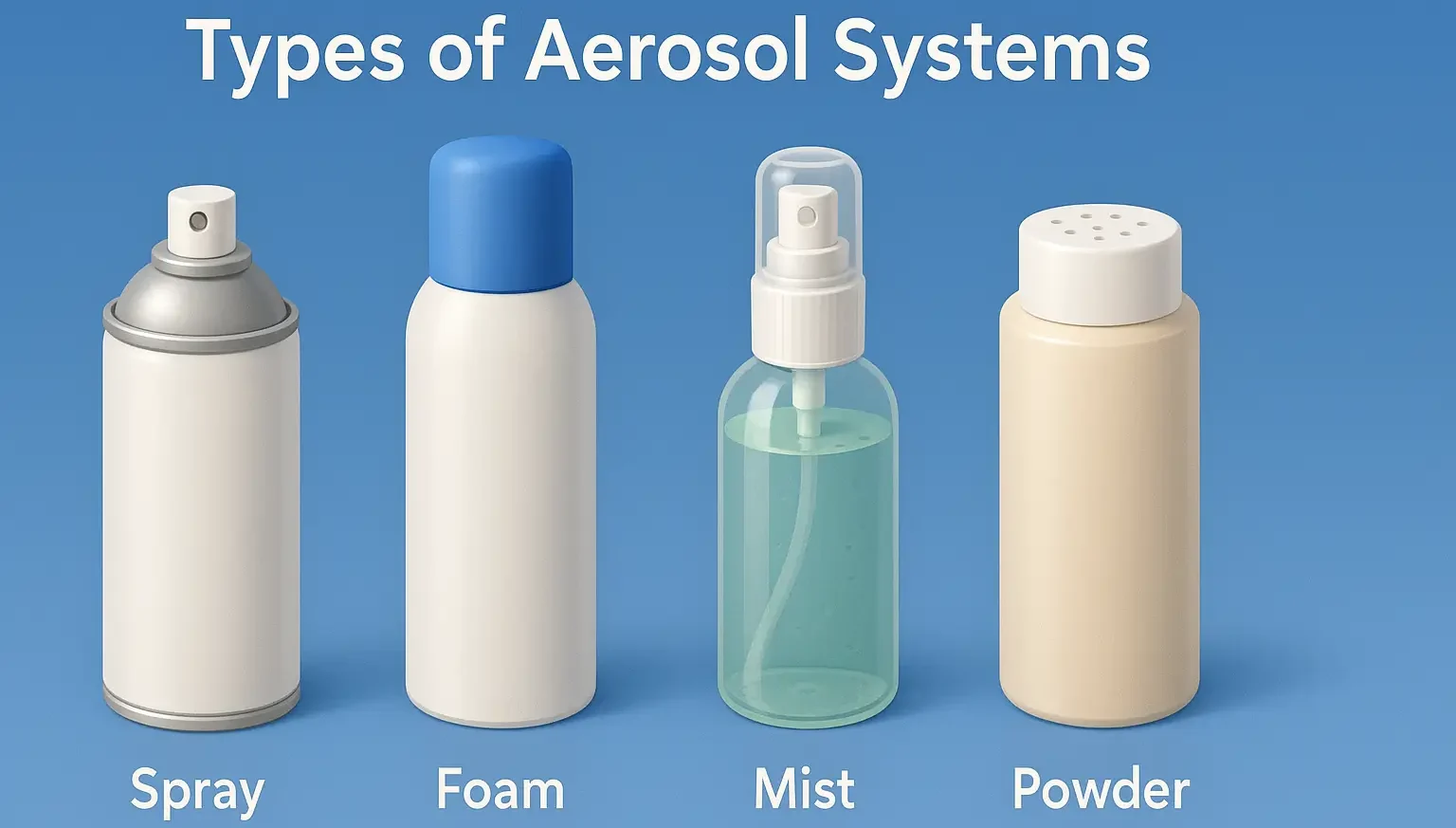- Types of Aerosol Systems vary by formulation, such as solution, suspension, or emulsion-based delivery mechanisms.
- Pharmaceutical aerosol systems vary based on formulation type, application route, and dose delivery mechanism.
Types of Aerosol Systems:

Advertisements
-
Liquefied Gas Systems
- Propellants: Hydrocarbons or nitrous oxide.
- Mechanism: Propellant evaporates to expel product.
- Uses: Hairsprays, deodorants.
-
Compressed Gas Systems
- Propellants: Nitrogen, CO₂, or air.
- Mechanism: Compressed gas forces product out.
- Uses: Food-grade aerosols, medical sprays.
-
Bag-on-Valve (BOV) Systems
- Mechanism: Product in a bag, separated from propellant.
- Advantages: 360° dispensing, minimal wastage.
- Uses: Sunscreens, nasal sprays.
-
Foam Systems
- Mechanism: Propellant creates foam.
- Uses: Shaving creams, hair mousse.
-
Metered Dose Systems
- Mechanism: Precise dosing per actuation.
- Uses: Asthma inhalers, nasal sprays.
-
Powder Aerosol Systems
- Mechanism: Compressed gas expels dry powders.
- Uses: Dry shampoos, powdered medications.
-
Dual-Chamber Systems
- Mechanism: Separate chambers for mixing on dispensing.
- Uses: Self-foaming cleansers, two-part adhesives.
Click Here to Watch the Best Pharma Videos
Advertisements
Advertisements

